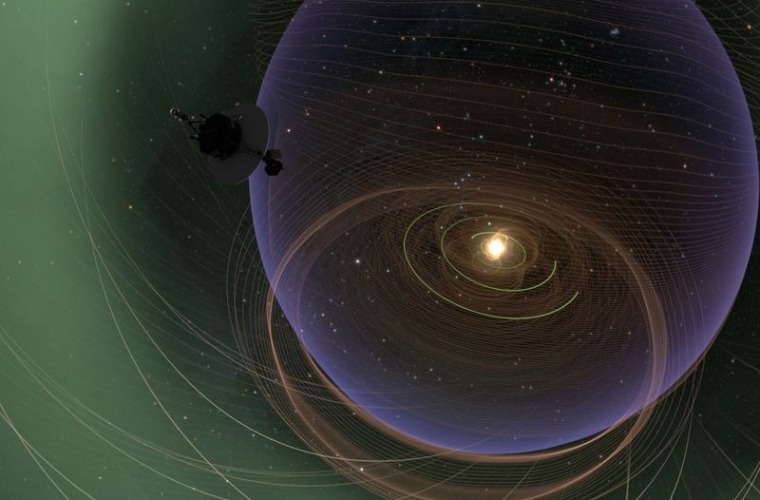Interstellar space is fluffy. This is true. What's more, the veteran Voyager probes have just discovered that this fluff is more magnetized than previously believed, a factor that seems to allow its very existence.
Of course, this fluff isn't made from the dust bunnies you find under your bed, the 'Local Fluff' (a nickname for the Local Interstellar Cloud) is a vast, wispy cloud of hot hydrogen and helium stretching 30 light-years across.
Our solar system is powering its way right through the Local Fluff and Voyagers 1 and 2 are currently traversing the boundary that separates the bubble of space surrounding our sun (a.k.a. the heliosphere) and interstellar space.
Supernova Exhaust
These two probes — launched in the 1970's to explore the outermost reaches of the solar system and then cruise into the unknown — have been making measurements of their surroundings during this transition through the boundary region (or the 'heliosheath').
Although they haven't entered the Local Fluff quite yet, the Voyagers are sampling the characteristics of the heliosheath, indirectly gauging the magnetic field of the Local Fluff they are quickly approaching.
Approximately 10 million years ago, a supernova cluster detonated nearby, generating a huge bubble of million-degree gas. Researchers have been very confused as to why the Local Fluff remains intact; it should have been blown away by the ferocious supernovae exhaust long ago.
It would be like expecting a wisp of cigarette smoke to retain its structure in the middle of a tornado; some kind of force would need to be surrounding (or intertwined through) the smoke helping it resist being dispersed. In the case of the wispy Local Fluff, a magnetic field may be helping.
Magnetized Fluff
"Voyager data show that the Fluff is much more strongly magnetized than anyone had previously suspected -- between 4 and 5 microgauss," said Merav Opher, a NASA Heliophysics Guest Investigator from George Mason University and lead author of research published in Nature on Dec. 24. "This magnetic field can provide the extra pressure required to resist destruction."
Slideshow 12 photos
Month in Space: January 2014
Astrophysical magnetic fields are often measured in units of gauss; the Earth has a magnetic field of approximately 0.5 gauss (or 500,000 microgauss). Therefore, 4 to 5 microgauss may seem pretty weak in comparison, but this field covers astonishing scales, appearing to wrap around a very tenuous hydrogen/helium gas, possibly helping the Local Fluff maintain its structure.
However, the Voyagers aren't inside the Fluff yet, how can they measure the cloud's magnetic field strength? By measuring the size of the heliosphere (which is maintained by the outward magnetic pressure of the sun's magnetic field), the probes have been able to deduce how much inward magnetic pressure is pushing down on the heliosphere. This inward pressure is being caused by the Local Fluff, so its magnetic field can be indirectly measured.
More Fluff, More Encounters
The Local Interstellar Cloud isn't the only cloud of fluff out there, and now Opher theorizes that other interstellar cloud formations may be highly magnetized too.
As the solar system continues to orbit around the galactic disk, it will encounter more clouds, deforming the heliosphere to lesser or greater degrees, potentially influencing life on Earth.
Cosmic rays originating from outside the solar system continuously bombard our atmosphere, but the quantity of these high-energy particles that rain down are influenced by the amount our heliosphere is deformed. The greater the pressure, the smaller the heliosphere becomes, and the more cosmic rays enter the inner solar system.
Not only could this have influenced our atmospheric dynamics in the past, it could impact future human spaceflight within the solar system. Let's face it, a deluge of highly energetic particles is bad news for any unprotected astronaut.

